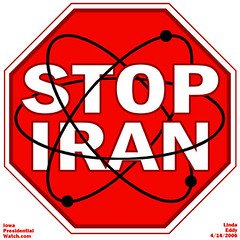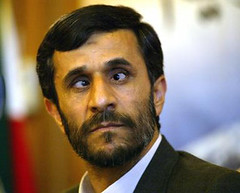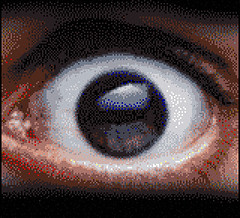Saturday, January 27, 2007
DEFENSE & FOREIGN AFFAIRS - Special Analysis
PRC Move to Demonstrate ASAT Capability Well-Timed and Deliberate
Analysis. By Gregory R. Copley, Editor, GIS.
The successful test of a terrestrially-launched anti-satellite (ASAT) missile by the People’s Republic of China (PRC) on January 19, 2007 (local; January 18, 2007 US time), was a major strategic signal by the PRC — just as was the October 9, 2006, detonation of a nuclear weapon by the Democratic People’s Republic of Korea (North Korea) — designed to establish a capability at a time when the US was too strategically preoccupied elsewhere to adequately respond.
The test, the first such ASAT missile demonstration anywhere in the world for some 24 years (the last was in 1982), was as much a demonstration of strategic intent and technological prowess as it was a test of an operational capability.
The missile destroyed an ageing PRC weather satellite, the FY-1C, in Low Earth Orbit of approximately 500 miles above the earth, leaving a debris field which poses a risk to other platforms sharing the same orbital arena.
Retired Col.-Gen. Leonid Ivashov, former head of the Russian Defense Ministry’s international military cooperation department, said that the PRC ASAT weapon was modeled on the Soviet IS-1 missile designed to destroy satellites, developed in the 1970s.
It was clear that the test did not embody the latest thinking about how future ASAT operations would most probably be conducted, but it did demonstrate that the PRC had been able to absorb the accurate missile guidance technology secretly released to the PRC by then-US Pres. William Clinton in the 1990s.
More likely, in a more broadly-based military use of space, the PRC would turn to energy-derived systems, such as space-based lasers as well as terrestrially-based lasers.
There was no intelligence warning in the West that such a test would occur, and, indeed, even Russian intelligence officials appeared to be surprised by the completeness and success of the PRC demonstration.
In the recent book, The Art of Victory: Strategies for Personal Success and Global Survival in a Changing World, I had a section entitled “The Militarization of Space … and China is in the Lead”. The book, which said that the PRC aimed to have a military base on the moon within a decade, also stressed that the PRC would use space weapons as its “checkmate” protection against the West in the future. The book said:
China ... will use science, technology, and space to achieve its shashou jiang (“assassin’s mace” strategy); its checkmate to achieve supremacy. China is investing heavily in space capabilities — including permanent moon basing within a decade or so — which would enable it to use space-based weapons to neutralize strategic ballistic missiles. Chinese leaders have taken seriously Ronald Reagan’s and Stefan Possony’s Strategic Defense Initiative (SDI), and have begun to implement it in a new sense.
By neutralizing the US, and Russian, Indian, Iranian, and all other ballistic missiles and the potential nuclear threat they carry, it would render the global playing field more equal. China is not attempting to go to the moon merely for “national prestige”; that would be wasteful.
US Congressman Edward J. Markey (Democrat, Massachussets), Co-Chair of the House Bipartisan Task Force on Nonproliferation and Chairman of the House Subcommittee on Telecommunications and the Internet, issued an immediate statement late on January 18, 2007 (US Eastern Time), on the PRC missile demonstration, noting:
The United States leads the world in space-based assets for communications, weather prediction, and military missions of all kinds. An arms race in space to develop anti-satellite weapons would cause needless instability and threaten American economic and national security.
Again, I urge the Bush Administration to negotiate a ban on testing and deploying these weapons, Markey concluded. The FY-1C was stationed at a Low Earth Orbit of approximately 500 miles above the earth. A massive cloud of debris is expected to result from the breakup of the satellite, threatening the many government and military imaging, weather and communications satellites within Low Earth Orbit.
Among the vital space-based assets at Low Earth Orbit is the Iridium constellation, a 66-satellite constellation of communications satellites used heavily by commercial and military clients. The fleet of weather satellites operated by the National Oceanic and Atmospheric Administration also functions at Low Earth Orbit, including those used in the joint US-Russian program for maritime search-and-rescue.
Additionally, all manned space missions including the Shuttle and the International Space Station, utilize Low Earth Orbit and are thereby put at risk by the debris cloud.
The development of PRC ASAT capabilities were expected.
For example, Yuan Liwei (PhD candidate of the Air Force Engineering University), and Yang Jianjun (Professor of the Air Force Engineering University), in Winged Missiles Journal, Issue 12, 2004 (a Journal sponsored by the China Aerospace Science and Technology Corporation, the State-owned flagship enterprise in the space sector), justified the development of ASAT weapons based on a calculus of necessity namely, that the weaponization of outer space had already severely threatened the PRC’s strategic security.
The development of ASATs, they said, would greatly enhance China’s prospects of winning a regional high-tech war while simultaneously stimulating growth in space technology industries. It was not only necessary, the authors said, but also feasible to develop such weapons.
The PRC had the financial resources and technological means to further this goal, including precision-guidance systems, launch vehicles for ballistic missiles as well as satellite orbital maneuvering technology. Yet, if the PRC was to develop ASAT weapons, it must also address a number of issues, such as space warfare theories and rules, the formation and structure of ASAT forces and key relevant technologies.
Yuan and Yang said that as military action against satellites was a highly sensitive strategic issue, different methods of attack (physical destruction, damage to key systems or jamming communications) should be employed according to the particular situation. The authors conclude that, given the enhanced rôle satellites would play in future wars, ASAT weaponry is destined to be a key factor in ensuring space superiority and national security.
To make certain the credibility of deterrence, and to safeguard its security and national interests in the 21st Century, the PRC must apply an asymmetrical strategy in accordance with its particular condition, actively researching and developing ASATs.
Footnotes:
1. Copley, Gregory R.: The Art of Victory: Strategies for Personal Success and Global Survival in a Changing World. New York, 2006: Threshold Editions of Simon & Schuster. ISBN-13: 978-1-4165-2470-0. See www.artofvictory.com.
Growing Leftist-Jihadist Linkages Highlighted by January 12, 2007, Attack on US Embassy
Analysis. By GIS Staff. Reliable sources indicate that the RPG-7 rocket-propelled grenade fired at the US Embassy in Athens on January 12, 2007, was supplied to the leftist Greek terrorist organization, Revolutionary Struggle, by the Albanian jihadist-linked group, the Kosovo Liberation Army (KLA/UCK).
The confirmation of the link demonstrates the growing linkages between anti-Western leftist terrorist groups and anti-Western Islamist jihadi groups, and there is some suggestion that the reappearance of Revolutionary Struggle may have been prompted directly by support received from the cash-rich KLA.
The KLA itself, now operating under a variety of new front names, is itself a nominally nationalist-based group which owes much of its origin to the ultra-Stalinist Hoxha-style Albanian political movement which was displaced by the end of the Cold War and the collapse of communism. But with the links through Albanian Muslims — and particularly Albanian Muslims living in the Serbian province of Kosovo — to the al-Qaida terrorist movement, and later to Iranian intelligence operatives, the KLA has now become an integral part of the jihadist movement in Europe, essentially controlling the illicit trade in narcotics, white slaving (prostitution), and arms to fund and equip terrorist operations.
The KLA link with Revolutionary Struggle, then, is logical. Moreover, it should be expected that the KLA/jihadist linkage into the Greek ultra-left groups will be facilitated by the injection of funds — derived from narco-trafficking — and weapons into the Greek groups. The ideological “purity” of the Greek leftist groups will ultimately begin to disintegrate as they focus on what is possible through the acquisition of illegal funds and weapons, as was the case with, for example, the Irish Republican Army (IRA) in its various forms, and many of the South American terrorist/insurgency groups which developed a “lifestyle” based on criminal activities.
Indeed, the jihadist groups and other Middle Eastern radical groups also have traditionally allowed themselves to be distorted by (a) availability of sources of funding, and (b) tactical opportunism.
In the case of the KLA-Greek leftist linkages, geographic contiguity is a key factor in the development of relations, compounded by the reality of the large number of Albanian nationals now resident in Greece. As well, the links which many of the older leftist Greek groups maintained with the former Greek ruling socialist PASOK Party, and PASOK’s clandestine support for jihadist terrorist groups and radical militias — such as the Palestinian Force 17 — facilitated an historic set of linkages between radical leftism and Islamist jihadism in South-Eastern Europe.
The revival of anti-US terrorist activities in Greece, and throughout the Balkans, therefore, should be expected to occur during 2007, particularly associated with the attempts by the KLA to ensure international recognition for an independent Kosovo. Ironically, this objective is supported by the US State Dept., the very target of the Revolutionary Struggle rocket attack.
Subscribe to:
Post Comments (Atom)














No comments:
Post a Comment